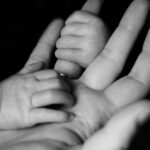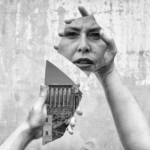Food queues, energy cuts, shortages of medication and petrol, and families unable to feed their children, continue to fuel some of the largest protests in Sri Lanka’s history, as the country tries to negotiate a solution to its $60 billion in debt.
The crisis is being described as the worst economic period in the nation’s independent history, with Sri Lankans forced to wait for hours in line for food, fuel and other necessities. Colombo, the nation’s largest city, currently receives only 13 hours of power a day. Even school exams have been cancelled nationwide, due to a lack of paper.
“Our lives have turned upside down,” said Samantha Karunasekar, a Colombo resident. “Waiting in queues for petrol and gas for hours is affecting our daily living as we cannot go about doing our usual activities.”
The government of President Gotabaya Rajapaksa is in talks with the International Monetary Fund for a $3 billion loan, of which the IMF has now agreed to $600 million.
Zahid*, a dad of two, who lives in Colombo, said during Sri Lanka’s civil war, he remembers lining up for ration slips with his mother as a child, but that access to necessities is even more limited now. At the time he spoke to Central News, he was in spot 900 in the queue for fuel in his neighbourhood.
“I cannot foresee something happening tomorrow,” he said.
“You become frustrated that you cannot do much for your kids. Thank God… we have still not gone hungry. But there are parents out there in the street who are crying, saying that they do not have food for their children.”
Underpinning the crisis is $60 billion of foreign debt, over $7 billion of which is due at the end of the year. The Sri Lankan government has suspended these debt repayments. Foreign currency reserves have dropped to $2.3 billion, making it impossible to import goods to the country. The national inflation rate climbed to 18 per cent in March, adding to the cost of living. Karunasekar says these economic conditions have left her with serious medical concerns.
All of a sudden, people started burning up the barricades and throwing rocks at the police.
“The main concern for me is the fear that there will be a shortage of medicine, even at a higher cost”, she said. “The general public is stocking up on their prescription medications but for how long can we stock them for?”
Sri Lanka’s youth has been at the forefront of wide-scale protests sweeping the country, as hundreds of thousands have turned out to demonstrate. Blaming the crisis on Sri Lanka’s president, Gotabaya Rajapaksa, the protestors are calling for his resignation.
Born into a Sri Lankan political dynasty, Rajapaksa was elected in 2019 on a campaign focused on economic growth. But he has since come under fire for economic mismanagement, placing under-qualified family members into prominent cabinet positions and rumoured financial corruption. The protest movement has become so large that every minister in Rajapaksa’s first cabinet resigned at the beginning of April.
Zahid and his teenage son attended one of these protests. It was peaceful, he said, and locals had brought their young children and pets to participate in the gathering. Then, it suddenly turned violent.
“All of a sudden, people started burning up the barricades and throwing rocks at the police,” he said.
“Of course, the police retaliated by shooting gas at the crowd… and in all this chaos, the people who instigated the violence slowly vanished.”
Zahid and his son were both teargassed and sprayed with water cannons. They took days to recover from their injuries. But he maintains the people instigating the chaos were planted by the government to paint the protestors as violent in the media.
“Otherwise, [if I had known it would be violent] I wouldn’t have taken my 15-year-old son to a protest.”
On April 12, a man in Rambukkana (two hours from Colombo) was the first protestor to be killed when police opened fire on the crowd.
WARNING: GRAPHIC CONTENT – A protester in Sri Lanka was killed after police opened fire to disperse crowds, marking the first fatality in weeks of demonstrations over a worsening economic crisis https://t.co/hLej7ZcSRo pic.twitter.com/XcHwoeL0Qm
— Reuters (@Reuters) April 20, 2022
But many argue Rajapaksa and his government simply worsened a recession which was decades in the making. Dinesh Renganathan, a Sri Lankan businessman, said the crisis is a result of “70 years of economic mismanagement”.
“[The] outlook is very negative,” he said.
“It’s going to take a lot of hard work to bring [the economy] back into production and it’s going to take at least two to three years.”
However, after years of foreign debt financing, critics of the government say they estimate Sri Lanka has a much longer road to economic recovery.
Though Australia is one of Sri Lanka’s closest Pacific trade partners, there is very little the federal government can do to economically assist Sri Lanka. Substantial infrastructure investments from China (most of which have been ineffective) pose a potential “conflict of interest” for Australia amidst growing Sino-Australian tensions, says Renganathan.
Despite this, Australians are being urged to assist on an individual level by donating to local charities. Sydney’s Sri Lankan community is leading the effort and hosted a ‘Long Lunch for Lanka’ on ANZAC Day— a six course meal in Darling Harbour by six Sri Lankan restaurants.
Ironically, in the midst of this crisis, Sri Lankans are uniting in thousands for one of the first times in its deeply-divided history.
Sri Lankan national anthem is the best, most beautiful and my favourite anthem in the world, always sang it with pride, joy, patriotism and ecstacy, but I have never felt so prouder than it was sung united at the peaceful protests in 2022. ?? #SriLanka #Unity pic.twitter.com/cn9K1YkfnE
— Daniel Alexander (@daniel86cricket) April 17, 2022
“You have all the religions, all the races, coming together [and] protesting as one— that’s beautiful,” said Renganathan.
“Politics only kept us apart. Now that it’s come together, it’s a wonderful thing that hopefully carries on.”
*Name has been changed to protect privacy
Main image screenshot courtesy South China Morning Post video.




























